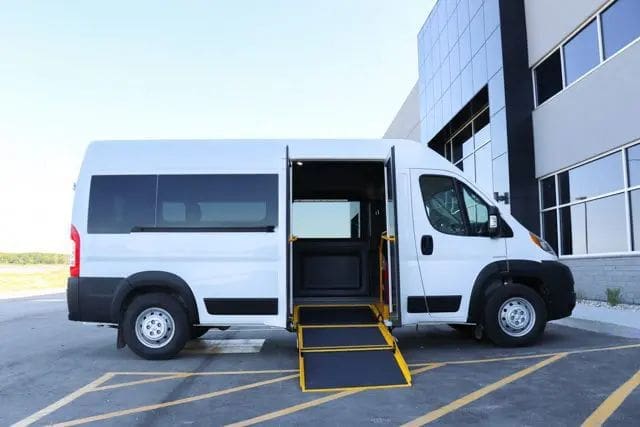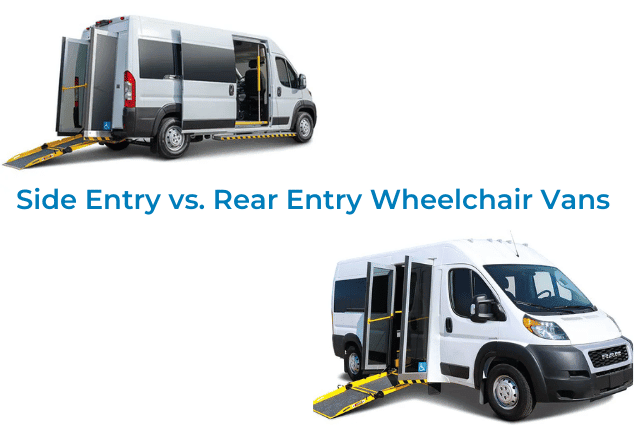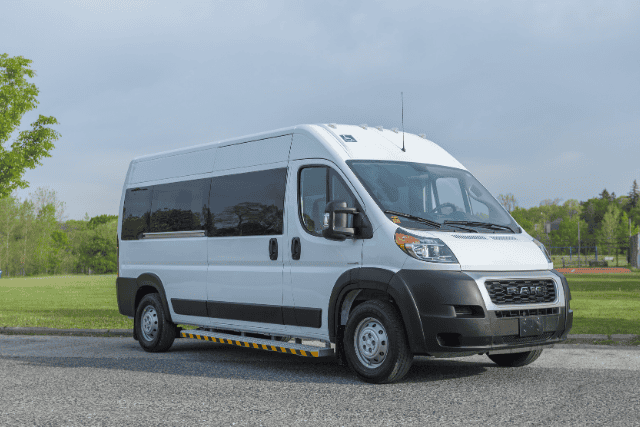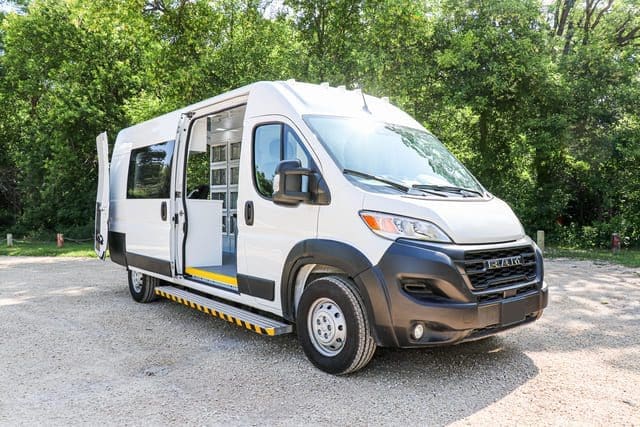Finding the right wheelchair accessible van for your organization can feel like a big puzzle. Maybe you run a healthcare facility, an adult daycare center, or a transportation service, and you need to choose between a side entry vs. rear entry wheelchair van.
This decision involves more than just cost or convenience. It’s about making sure your passengers are safe, comfortable, and happy. You might be wondering about the best way to load and unload, how easy it is for passengers to get in and out, and which option works best for your space. Don’t worry; we’ve got you covered.
At AVAN Mobility, we manufacture mobile medical vehicles and wheelchair-accessible vans that help people access healthcare and get to where they need to go. We’re not the only ones doing this, but with over a decade of experience, we’re pretty good at it.
In this article, we’ll explain the differences between side entry and rear entry wheelchair vans. You’ll find out which situations they work best in and how to choose the right one for your needs. Keep in mind that this information only applies to full size wheelchair vans. Let’s get started!
Differences between side entry vs. rear entry wheelchair vans

When we talk about side entry and rear entry wheelchair vans, we’re talking about where passengers get in and out of the van.
Rear entry wheelchair accessible vans have passengers enter through the back. Imagine a ramp at the rear door of the van. The passenger rolls up into the van from the back, similar to loading something into the trunk but for people.
Side entry vans have passengers enter through the side door using a ramp.
In the next couple of sections, you’ll learn how side entry and rear entry wheelchair vans differ in specific scenarios.
Wheelchair van parking
Rear Entry Vans
When you’re parking a rear entry van, you’ll want to use a parking lot or driveway whenever possible. If you park on the street, your passengers will have to load and unload directly into traffic, which can be pretty nerve-wracking with cars zooming by. Also, remember you’ll need enough space behind the van for the ramp to work properly.
Side Entry Vans
With a side entry van, you need to think about the space on the side. These vans are ideal for loading and unloading onto a curb or sidewalk. This setup makes it easier for passengers to roll in and out without worrying about traffic.
A little planning goes a long way in keeping your passengers safe and comfortable when parking these vans.
Accessibility for ambulatory passengers
Rear Entry Vans
With a rear entry van, wheelchair users come in through the back using the ramp. But if they’re walking, they’ll enter through the side doors. This way, everyone has a clear and easy way to get inside.
Side Entry Vans
A side entry van makes it simple for everyone. The ramp comes out from the side, so whether your clients are using a wheelchair or walking, they can just roll or stroll right up from the curb. It’s straightforward and convenient for all passengers.
Wheelchair accessibility
Rear Entry Vans
When using a rear-entry van, wheelchair users roll up the ramp straight into the back of the van. They don’t have to turn or twist; it’s a straight shot in and out. This setup can make getting in and out of the van easier and faster.
Example: Imagine your friend in a wheelchair heading up the ramp into the van. It’s smooth sailing since they don’t have to make any tricky turns. They just roll right in, and it’s simple and hassle-free.
Side Entry Vans
Now, for side entry vans. Wheelchair users roll up the ramp from the curb, but then they have to make a 90-degree turn to face forward. If the wheelchair is large or heavy, making that turn inside the van can be a bit challenging. You’ll also need enough space inside the van to maneuver the wheelchair into the right position.
Example: Picture your friend rolling up the side ramp. They get inside and then have to turn the wheelchair to face forward. If the wheelchair is big, this might take a bit of extra effort and space. It’s doable, but just something to keep in mind when considering side entry vans.
Should you choose a side entry or rear entry wheelchair accessible van?
When choosing between a side entry or rear entry wheelchair accessible van, you need to think about what will work best for your organization’s needs.
Bottom line: If you park in tight spaces and will be frequently parking next to curbs, a side entry van might be better. But if you want a simpler, straight-in approach, rear entry could be the way to go.
Understanding side entry vs. rear entry wheelchair vans: what’s next?
You came to this article to figure out the differences between side entry and rear entry wheelchair vans. Now, you know how they differ in terms of parking, how passengers board, and how easy they are to use for both wheelchair and ambulatory passengers.
At AVAN Mobility, we’re passionate about making mobility accessible and stress-free for everyone. If you’re not sure whether to purchase a side entry or rear entry wheelchair van or need more information about our vans that exceed industry standards, click the button at the end of this article to talk to one of our mobility experts. We’re here to help you find the perfect solution for your needs.
If you’re not ready to talk to someone yet but still have some questions, start by watching our video on wheelchair van pricing.
FAQ: Side Entry vs. Rear Entry Wheelchair Vans
Q: Are there specific parking challenges for side entry and rear entry wheelchair vans?
A: Yes, there are. For side entry vans, you need enough space on the side to deploy the ramp, making parking in tight spots tricky. Rear entry vans, on the other hand, require space behind the vehicle for the ramp to extend, which can be a challenge on busy streets.
Q: Is a side entry or rear entry van better for larger wheelchairs?
A: Rear entry vans are generally easier for loading and unloading larger wheelchairs because the ramp provides a straight path in and out of the vehicle. Side entry vans require the wheelchair to turn 90 degrees to face forward, which can be challenging for heavier or larger wheelchairs.
Q: What situations are best suited for side entry vs. rear entry vans?
A: Side entry vans are ideal for situations where curbside loading and unloading are common, such as in busy urban areas. Rear entry vans are better suited for areas where you have more space behind the vehicle, like parking lots or driveways, making them a good choice for residential use or facilities with ample parking space.
Q: Are side entry or rear entry vans better for specific types of organizations?
A: It depends on the needs of your organization and clients. Healthcare facilities in busy urban areas might prefer side entry vans for easy curbside loading. Adult daycare centers with spacious parking might find rear entry vans more convenient for straightforward loading.
Transportation services that need more seating and frequent stops may also prefer rear entry vans. The right choice depends on your organization’s environment and usage.





